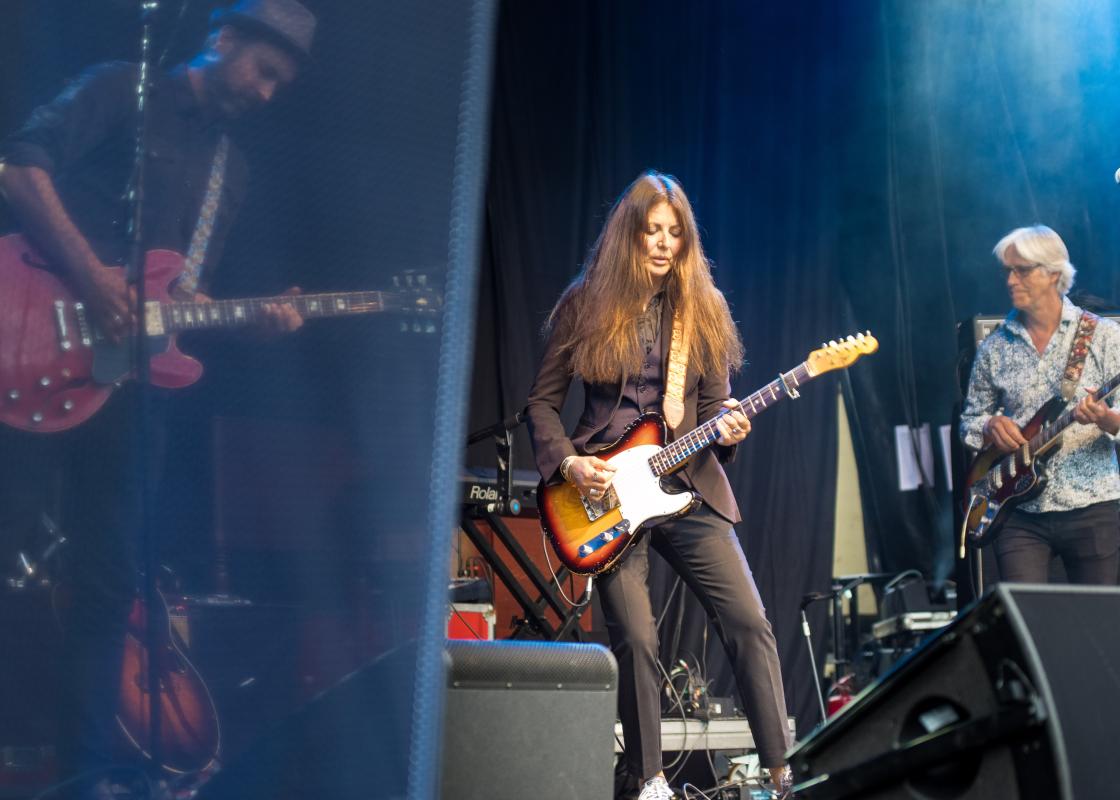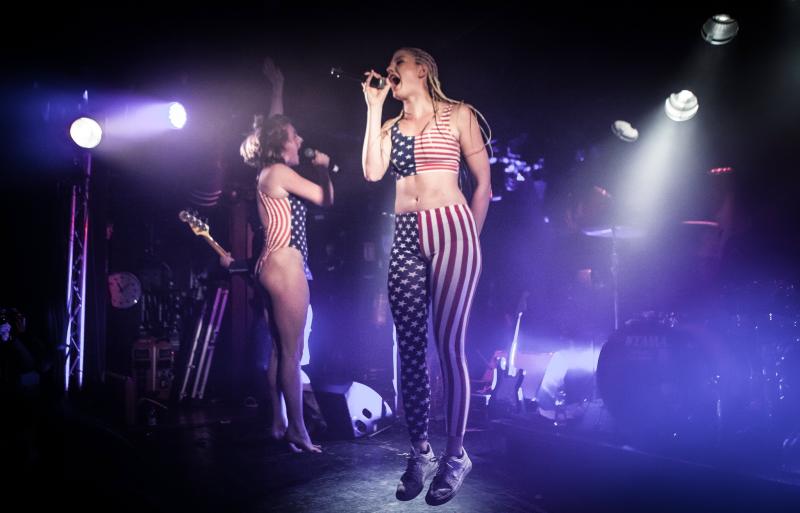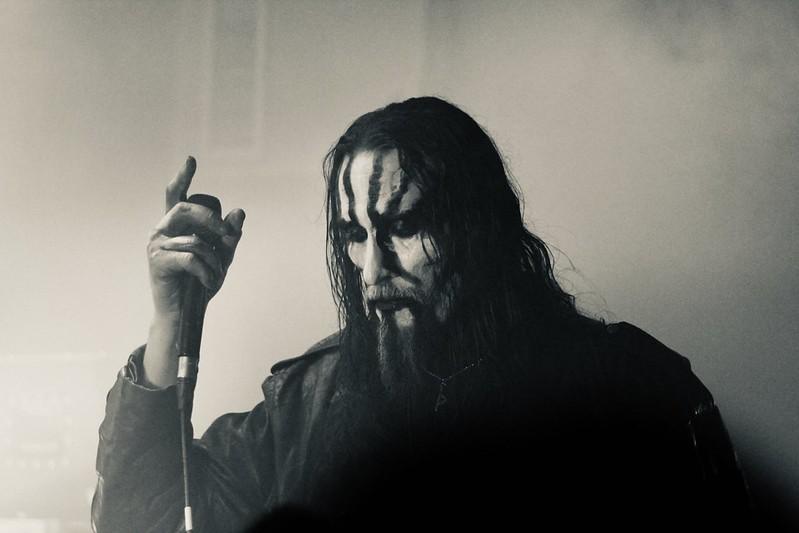Over the years, country music has become increasingly popular among Norwegians . From local country festivals to hip club scenes in the cities, the genre has gained a foothold in broad social strata. However, little research has been done on country music in Norway.
That is about to change. Stian Vestby is leading a research project that is taking a closer look at women's role in country music,. To date, he has written a historical overview of country music in Norway, together with Kristin Solli at OsloMet.
“The two of us are rather unique in a Norwegian context, as we have both written doctoral theses on country music,” says Vestby.
“The collaboration with Kristin was therefore a good fit for this project, generating a text that serves as a basis for further work. It provides a historical overview and analyses some of the key trends and new directions in the field. The gender perspective is an important part of this.
The research project “Challenging country music’s masculine domination: Feminine identities and creative signification in contemporary Nordicana” at Inland Norway University of Applied Sciences addresses how the genre has developed, and women’s role and significance in Norwegian music and in country in particular.
The project is led by Associate Professor Stian Vestby at Inland Norway University of Applied Sciences, who has also written the article: “From cowboy to nordicana”, a historical overview of country music in Norway, together with Kristin Solli, associate professor at OsloMet.
Romanticising the cowoby
Country’s arrival in Norway started with the cowboy. Artists dressed up as cowboys and wrote lyrics that romanticised life on the prairie, with Arne Bendiksen as one of the central figures. Vestby points out that the cowboy is a stereotype rooted in reality. But there is also a performative element

“Historically, the cowboy, who is a very masculine guy, has been a central symbol for the genre,” says Solli.
“It has clearly been a masculine ideal, but there have always been strong women in country music too.”
Another dimension of the romanticisation of cowboy life is the dynamic between town and country. Country lyrics have traditionally been about rural everyday life and in the countryside, for example about farming and tractors, forests and other nature.
Solli believes that this theme also overlaps with gender perspectives:
“This resonates with the research from other disciplines. The girls move to the cities, get an education and broaden their horizons, the boys stay behind. It's a simplification, but we also see these tendencies in the Norwegian country music field.”
Characteristics of rural culture
In their work, Vestby and Solli use the term “glocalisation”, which, in short, means a global phenomenon, for example American country music, taking on a local dimension in contact with other cultures.
In Norway, music that is situated in the countryside is influenced by the Norwegian rural culture. For example, many country artists began singing in dialect and using instruments such as the accordion and Hardanger fiddle as distinctive Norwegian musical references.
“Norwegian country music is not just a copy of American music, it has a distinct local and national character,” says Vestby.
“And sometimes this can make it pretty coarse, like in the Vassendgutane song ‘Granada’, which is about the Norwegian cruising culture.
In the lyrics, they sing about the car being equipped with “whore lights in the ceiling”, i.e. that it’s about luring women into the car, he says.
“That’s one of the more rural expressions, where male chauvinism also comes to the fore. This is in contrast to the country music that is embraced more by the educated and middle classes, and among more urban people in general
“Real” country

The women have had an ambivalent position in the genre, both in the US and Norway, says Solli. It’s about authenticity; whether or not they’re playing “real” country.
“Certain artists have been seen as not ‘being country enough’ or that the feminine dilutes the music,” says Solli.
“Like Heidi Hauge. She sold a lot, but wasn’t embraced by many fans of the genre. Same thing for Shania Twain. It’s too pop, or too feminine. It's an interesting dynamic, which applies both to the women who push the boundaries of the aesthetic, and artists where their femininity means they are not embraced by certain listeners.”
This is a phenomenon that other researchers have pointed to, including in popular music research in general. Artists who are more pop and feminine are perceived by many as being less serious and credible.
“They challenge the criterion that the music should be authentic,” says Vestby.
“That it should be genuine, real and rooted in reality. If it becomes too smooth and pompous, then you’ve moved into something inauthentic. It may be very marketable, but often has no cred. That may have been the challenge of some of the female artists, who have been a little too pop in the world of country.”
Different requirements
That doesn't mean that no women have made the grade in country music. Among others, Claudia Scott was early on the scene and became very popular. The researchers point out that she was active at the same time as rock music began to influence the genre.
“She came from a family that already had credibility in the country scene, and together with Ottar ‘Big Hand’ Johansen and Casino Steel, Scott made country acceptable to the rockers,” Solli said.
Claudia Scott appealed to both country fans and those more interested in rock. Part of the reason for this was that she was part of the music scene in Bergen in the 1970s, which embraced a wide range of styles.
“She gained a lot of experience and opportunities to play. I think that was important, that she almost grew up among all these musicians who were open-minded, and became an innovator herself,” says Solli.
Women need to prove more
However, there are some barriers. Vestby believes female country musicians can easily be subjected to stigmatising attitudes, but not necessarily from the public. It could just as easily be from the people around the artists, such as concert promoters and sound engineers, who may express prejudice.
“These are things that female artists in the country music scene are still talking about today,” says Vestby.
“That they’re not taken as seriously. They come across attitudes that as a woman you have to prove a lot more, both with respect to your instrument and your songwriting. The bar for recognition is set higher.”
Solli herself has been active as a country musician, and believes that there are other aesthetic requirements for women.
“For example, women should ideally sing beautifully. It’s not the same for men” she says.
"Women may demand more of themselves, which is probably a result of slightly different expectations. I was most active in the nineties, when there were a number of great female artists around, like Claudia Scott and Somebody's Darling. It meant that there were more opportunities, and that you knew women could make it. There was probably a bit of prejudice from those who didn’t know much about the genre and had stereotypes about how we were.”
Room for diversity
Professor Kai Arne Hansen at Inland Norway University of Applied Sciences has researched gender perspectives in popular music. He believes that country, like most other music genres, encompasses a diversity of gender expressions. There are still many artists who embrace traditional gender roles, but diversity is increasing.

“Artists who challenge both gender norms and genre boundaries are becoming increasingly visible,” says Hansen.
“Brandi Carlile, Lil Nas X and Orville Peck are examples of artists who have both experimented musically within the country genre and who have taken an exploratory and playful approach to the aestheticization of gender in music videos and through the staging of their own gender identity.”
One example Hansen has studied in detail is artist Lil Nas X and his song “Old Town Road”. The song mixes elements of country and hip-hop, and was a huge success, but Hansen found conflicting tendencies in how it was received by the country music community.
“A lot of people were positive about the categorisation of Lil Nas X as a country artist,” he says.
“His success was understood both as a validation of black musicians’ contribution to the genre and as a sign of increased acceptance of LGBTQ+ identities in popular culture.”
Boycott of Wrangler jeans
On the other hand, some country fans were critical, he says.
“A boycott of Wrangler jeans was organised after they partnered with Lil Nas X, and it was only after he collaborated with well-known country artist Billy Ray Cyrus that he got his big commercial breakthrough. We often see that artists who play with gender generate both positive and negative reactions – regardless of genre.”
Popular music deals with gender norms in different ways in different genres, according to Hansen. Visibility and reactions change in line with broader cultural and societal changes, and it is difficult to point to general or overarching trends. Today, there is cultural interest in gender expressions that challenge traditional norms, while heteronormative gender ideals still persist in popular culture.
“The fact that music can create interest in and understanding of a diversity of human experiences is one of the reasons why music means so much from a cultural and societal perspective,” says Hansen.
"Diversity among songwriters and musicians is a necessity in that respect. We now see actors in different parts of the music industry, such as festivals, record companies and award ceremonies, focusing more and more on facilitating such diversity. This creates a more inclusive music culture in the long run.”
New beats
Today, nordicana, a Scandinavian variant of Americana where country music is central, has become popular among a wide range of listeners, also outside the country music scene. Several of the most famous artists are women, such as Ida Jenshus, Malin Pettersen and Stine Andreassen from The Northern Belle.
Stian Vestby has interviewed several of these artists, who point to community and professionalisation as important success factors.
“When one of them experiences success, the others applaud and support it, and they learn from and back one other,” he says.
“Labels like Die With Your Boots On, Jansen Records and West Coast Records have invested in more artists in this milieu. The fact that a community has developed and the way record companies work with these artists has been professionalised has been important.”
Different experiences
There are also differences when it comes to the artists’ experiences of writing applications for support, according to Vestby.
“Semi-professional country bands from rural Norway probably fall short compared with nordicana artists when it comes to this type of skill set.
Several of the nordicana artists have also gained acceptance in the more traditional country music scene. Among others, Die With Your Boots On and some of their artists have been booked for Seljord Countryfestival. Norsk Countrytreff has also developed its programme over time to reflect the diversity of the genre.
“At the same time, Ida Jenshus stated a few years back that she no longer gets to play at these festivals,” says Vestby.
“So experience may differ, and there may be differences from festival to festival. Jenshus was a fixture at the big country festivals in the beginning, but went on to not get as many gigs there. The music was perhaps too genre-defying.”
Musical gentrification
The researchers also use the term “musical gentrification” to explain these new trends in the country genre. When something is gentrified, the original “inhabitants” are typically pushed out. In this case, it could be envisaged that new artists and listeners push the more traditional style aside.
However, there is still room for diversity in the genre, Vestby emphasises.
“It is not the case that all country music that is simple, rural and male chauvinistic is pushed aside when Nordicana makes the genre hip,” he says.
“But it does put some pressure on masculine country music. It may be a little harder for some talented, masculine-oriented country bands to win a Spellemannpris award now than it was before, which could be a consequence of gentrification.”
However, the trends the researchers observe are more diverse. The genre “cowboy” no longer exists, but several of the traditional ideas live on, also in the new styles of the genre.
“The cowboy symbolism is still there,” says Solli.
Broadening the genre
“The genre has broadened, and there is less polarisation between the different groups than there was around the turn of the millennium for example. There is no longer the same need to clarify what country is and is not, what is right and wrong. I find there is more acceptance that there are different types of country.”
Vestby and Solli believe that the development of women's role in country music can be seen in the context of increasing gender equality and diversity in society in general. Vestby is now set to take a closer look at the structural assumptions, through cultural policy, possible gender differences in relation to the public support schemes, and what the feminist movement may have meant for the development of the country field.
“The Norwegian women in country music are part of an interesting historical phenomenon,” he concludes.
"One thing I see in many of today’s female artists is a more activist approach. The lyrics can address what it’s like to be a woman in society and in the music industry today, and artists collaborate more and network with eco-companies, for example.”
“There are new norms in the field that have not yet been explored to any great extent. I hope more people will work on these issues. We have a talented country music field, which deserves attention.”



